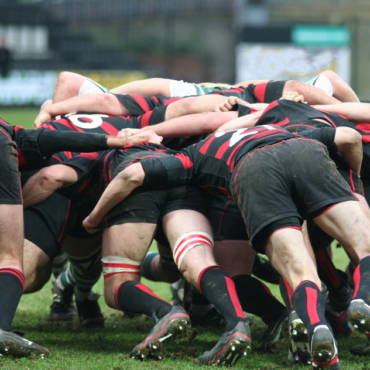What’s the difference between learning sports skills to play sport and learning sports skills to win in competition conditions?
Playing the sport is about learning and executing the skills of the sport.
Winning in competition is about executing skills to a high level of mastery, at high speed, in fatigue conditions and under pressure and consistently making the right decision about when, where and how to execute the skill.
So, why do so many coaches insist on teaching the basic skills without progressing them from playing level to performance level?
When you think about it, athletes move through six different levels of skills development:
- Skill level 1: Initial Learning – The athlete learns the skill; This first level is all about optimising learning through creating an environment where athletes want to learn and are genuinely engaged with the learning process. The faster and more effectively athletes can learn, the faster they can develop and improve;
- Skill level 2: Skill Mastery – The athlete masters the skill; Perhaps the greatest challenge for coaches in this century – creating a learning environment where athlete’s are engaged in and committed to the learning process to a point where they willingly repeat the skill in a high quality practice until it is mastered;
- Skill level 3: Add Speed – The athlete masters the execution of the skill at high (competition level) speed; All sports – maybe with the exception of darts, lawn bowls and chess – require mastery of skills execution at high speeds;
- Skill level 4: Add Fatigue – The athlete masters the execution of the skill at high speed when fatigued; There must be a million research studies on the impact of fatigue on the accuracy and quality of skills execution – there is no disputing the fact that as athletes get tired, their skills will show signs of fatigue and failure. So creating practice situations which demand excellence in skills execution with the on-set of fatigue is vital;
- Skill level 5: Add Pressure – The athlete masters the execution of the skill at high speed when fatigued and under pressure; The biggest different between amateur sport and professional sport is the level of pressure. Professional athletes must be able to consistently execute quality skills under the glaring eyes of fans, sponsors, media and coaches whilst performing at the highest level of their sport. It makes sense then to create practice situations where players are required to demonstrate technical excellence under pressure;
- Skill level 6: Make the right execution decision – The athlete masters the execution of the skill at high speed when fatigued and under pressure and consistently makes the right decision about when, where and how to execute the skill; In this final skills development level, successful athletes consistently demonstrate technical excellence at the “right” time. That is, they are able to execute technically excellent skills fast, when fatigued and under pressure but most importantly they execute skills at times which create a performance advantage for themselves, creates a performance disadvatange for their opposition or both.
And here is an important skills teachning issue we all fail to address.
Often in competition, skills are not executed in “textbook” fashion. Particularly in team sports – and specifically in football codes, hockey, basketball, netball and contact sports where opposition players are applying physical and mental pressure on players and their ability to execute skills, the art of skills improvisation becomes important.
How many times do professional players execute an effective pass or a kick or tackle or scoring shot while standing on one leg, bent at the hip 45%, with one eye closed and three players climbing on their back? In pressure situations, often it is not the technical excellence of execution but the effectiveness (outcome) of execution under pressure. It may not look pretty…but it worked!
So the question is again – are we preparing athletes to perform “textbook” quality skills or are we preparing them to win on the field, on the court, on the track and in the pool? Do we – and how do we practice winning “ugly” – i.e. being effective with improvised skills execution?
So, the challenge for all coaches is to look at their skills practices and learning programs and ask themselves:
“Am I teaching the athlete to execute the skill or am I teaching the athlete to execute the skill in competition conditions?”.
If the answer is “in competition conditions” then ensure your skills practices progress learners from the basic skill learning to the mastery of skills execution in performance situations.
You wouldn’t send an athlete into a game only partially fit.
You wouldn’t send an athlete into a race only partially flexible.
Yet sending an athlete into the “battle field” without ensuring that their skills execution will withstand the challenges and demands of competition conditions is only partial preparation.
We’ve all heard the rhetoric – “train the way you want to play”.
We all know it’s right.
Why aren’t we doing it?
Wayne Goldsmith



2 Comments
Hello Mate,
Very good,exactly what I was alluding to during the last Level 2….Q.What motivates our coaching plans and strategies. A. Competition results or, ability to execute skills under comp pressure….which leads naturally to the ‘glue’ of coaching planning = GAME SENSE COACHING.
Regards. TOOT
Thanks Toot.
Appreciate the support and comments.
Really enjoyed the chat last week about coaching, cricket and your innovative work with teaching skills to players and coaches all over the world.
Keep up the great work!
WG
Comments are closed.